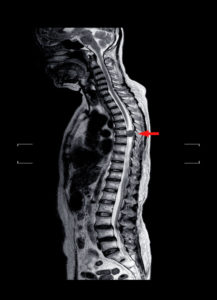 If you’ve been researching chiropractic care (and you really should be, if you’re considering seeing a chiropractor) you’ve probably seen the words spinal subluxation often. You’re also probably wondering what exactly those words mean.
If you’ve been researching chiropractic care (and you really should be, if you’re considering seeing a chiropractor) you’ve probably seen the words spinal subluxation often. You’re also probably wondering what exactly those words mean.
A spinal subluxation, or Vertebral Subluxation Complex, is the term for when one or more vertebrae become misaligned. When this occurs, the misaligned vertebrae can interfere with the normal function of the nervous system that they’re supposed to protect. A spinal subluxation is often a result of trauma, illness or stress.
Once a spinal subluxation has occurred, it’s important to seek treatment as soon as possible. If left untreated, a simple misalignment of a few vertebrae can lead to serious complications that even surgery can’t be guaranteed to fix.
The 5 Stages
There are five stages in the progression of spinal subluxation, from initial misalignment to irreversible damage:
Spinal Kinesiopathology
At this point the bones of the spine have lost their normal motion and position. Ability to turn and bend is restricted.
Neuropathophysiology
Misalignment of the vertebrae can choke or irritate delicate nerve tissue, causing symptoms elsewhere in the body.
Myopathology
Muscles supporting the spine can get weaker or become tight and go into spasms. This can cause damage that will require repeated spinal adjustments.
Histopathology
Damage to muscles and nerves can cause a rise in temperature from an increase in blood and lymph supplies, resulting in swelling and inflammation. Discs can bulge, herniate or tear, resulting in permanent damage.
Pathophysiology
Over time, abnormal bony growths can attempt to fuse the failing spinal joints. These growths, along with long-term nerve damage, can cause other systems of the body to malfunction.
Symptoms
Not all cases of spinal subluxation present with symptoms, but a few of the common symptoms that do occur are:
- Pain, tenderness, soreness and stiffness in the neck and/or back
- Spinal muscle spasms
- Reduction in spinal flexibility
- Pain, numbness or tingling in the extremities
- Chronic headaches
- Dizziness or balance problems
Some patients experience symptoms that seem unrelated to the spine and can make spinal subluxation hard to diagnose, such as: joint pain or stiffness, reduced ability to heal, low energy and general ill health.
Treatment
In the early stages of spinal subluxation, chiropractic manipulation, used in conjunction with other conservative treatments, such as pain medication, exercise and stretching, has been shown to provide relief and increase flexibility. Unfortunately, the longer it goes untreated, the more likely it is to require invasive and expensive procedures to fix.
If you feel symptoms of a spinal subluxation, especially if you’ve recently been in an accident or suffered a fall, contact a chiropractor. You only get one spine, take good care of it.
